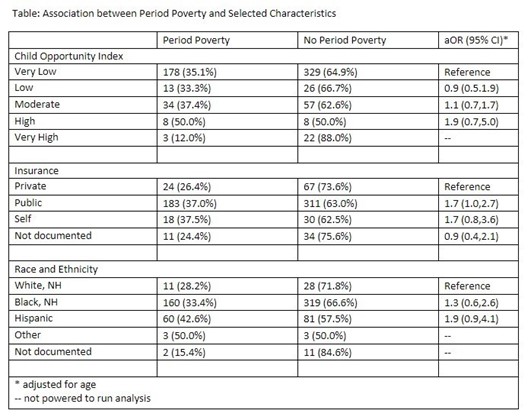Research presented during American Academy of Pediatrics 2024 Conference & Exhibition analyzes opioid prescriptions following fracture diagnoses
ORLANDO, Fla.—Children born to greater socioeconomic backgrounds are significantly more likely to be prescribed opioids, according to research presented during the American Academy of Pediatrics 2024 National Conference & Exhibition at the Orange County Convention Center from Sept. 27-Oct. 1.
The abstract, “Overprescription of Opioids in White Children from Higher Socioeconomic Backgrounds: Disparities in Opioid Utilization for Pediatric Supracondylar Humerus Fractures,” looked at the rates in opioid prescriptions following childhood broken elbow diagnoses from 2012 to 2021.
Apurva Shah, MD, MBA, Attending Surgeon, Orthopaedic Surgery at the Children’s Hospital of Philadelphia, who authored the abstract, also pointed to results that showed a third of patients in the abstract received at least one opioid dose during their visit.
“As orthopaedic surgeons, we clearly need improved opioid use stewardship to improve healthcare outcomes for our patients,” Dr. Shah said.
Results found disparities in patient racial backgrounds, with Black children 27% less likely to receive an opioid prescription compared to other patients. By comparison, white patients were also shown to be 10% more likely to be given opioids.
Other factors that impacted patients’ likelihood of being given opioids included age and where they live, according to Dr. Shah.
“Non-opioid pain management has proven sufficient for pain management,” Dr. Shah said. “Knowing this, along with this abstract, pediatricians must consider the potential harm these drugs can have on populations with disproportionately easier access to healthcare.”
This research was funded by Children’s Hospital of Philadelphia, Division of Orthopaedics.
Media Relations Contact: Ashley Moore at moorea1@chop.edu
Scott Mahon is scheduled to present his research, which is below, at 8:51 – 8:55 a.m. on Sunday, Sept. 29 during the Section on Orthopaedics program at Orange County Convention Center, West Building, W311H. To request an interview with the authors, contact Ashley Moore at moorea1@chop.edu.
Please note: only the abstract is being presented at the meeting. In some cases, the researcher may have more data available to share with media, or may be preparing a longer article for submission to a journal.
# # #
The American Academy of Pediatrics is an organization of 67,000 primary care pediatricians, pediatric medical subspecialists and pediatric surgical specialists dedicated to the health, safety and well-being of infants, children, adolescents and young adults. For more information, visit www.aap.org. Reporters can access the meeting program and other relevant meeting information through the AAP meeting website at http://www.aapexperience.org/
Abstract
Program Name: 2024 AAP National Conference-Abstracts
Submission Type: Section on Orthopaedics
Abstract Title: Overprescription of Opioids in White Children from Higher Socioeconomic Backgrounds: Disparities in Opioid Utilization for Pediatric Supracondylar Humerus Fractures
Apurva Shah
Philadelphia, PA, United States
Nonmedical use of opioids in children and adolescents is a well-established public health concern. For many adolescent patients, an initial opioid prescription can act as a gateway that may lead to opioid misuse later in life. The purpose of this study is to investigate if patient factors, including sex, race, ethnicity, or Childhood Opportunity Index (COI), are associated with higher or lower likelihood of opioid prescription in children with fractures, utilizing pediatric supracondylar humerus fracture as an archetypal example.
Data was obtained from the Pediatric Health Information System (PHIS), an administrative database consisting of patient encounters across 52 pediatric hospitals. Patients with supracondylar humerus fractures who presented to an emergency department and were treated non-operatively were included. The primary outcome variable of interest was whether or not patients received an opioid prescription. We also extracted and assessed patient-level predictors for opioid use, including age, sex, race, ethnicity, primary payer, COI, and geographic region. To account for hospital level variation, we conducted mixed-effects logistic regression.
In total, 35,452 children (52% male) with non-operative supracondylar humerus fractures at a mean age of 5.7 ± 2.8 years were included. About one-third of patients (10,731; 30.3%) received at least one dose of opioids. After accounting for hospital-level characteristics, White patients were significantly more likely to receive an opioid prescription (OR 1.1, p=0.016), while those with public insurance were less likely (OR 0.85, p=0.001). Kids from moderate, high, and very high COI regions were significantly more likely to receive opioids compared to very low COI regions (OR 1.1-1.2). Additionally, older children (5-13 years) were significantly more likely to be prescribed more opioids compared to younger children (1-5 years) (OR 1.4, p< 0.001). No differences due to region or sex were found statistically significant. Results are further described in Table 1.
Opioids for supracondylar humerus fractures, despite the efficacy of non-opioid alternatives, are prescribed at high rates and disproportionately to White children and patients from higher COI areas, reflecting important socioeconomic disparities in opioid prescription patterns. Though non-opioid pain management using acetaminophen or ibuprofen provides sufficient pain control for treating supracondylar humerus fractures, unfortunately, almost one-third of patients being treated non-operatively were prescribed opioids. Our investigation demonstrates that White patients and children with higher COI are especially likely to be prescribed opioids, indicating that prescription pattern disparities may be harming the portion of the population that has historically had better access to healthcare.
